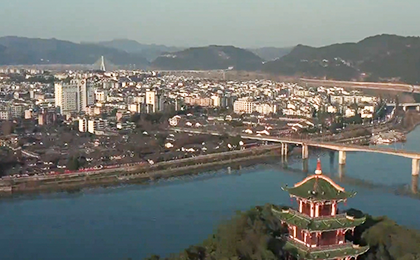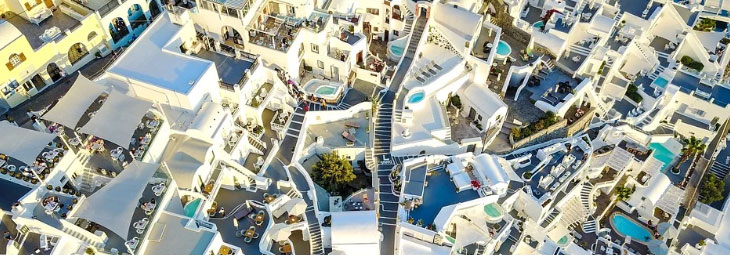


Historical and cultural city is an important material carrier of Chinese excellent traditional culture. It shows the historical context and brilliant achievements of civilization development. It carries the cultural gene, national spirit and emotional memory of the Chinese nation. It contains the unique concept of human settlement and construction wisdom of Chinese civilization. It is an important source of Chinese spirit, Chinese value and Chinese power. It is the emotion and homesickness of the Chinese people.
Since November 2023, the Central Radio and Television Station and the Ministry of Housing and Urban-Rural Development have jointly launched the " Wenmai Chunqiu " documentary, focusing on the unique charm of the national historical and cultural city with the five thousand years of Chinese civilization as the time and space, presenting the fruitful results of the protection and activation of the ancient city in a panoramic way, opening an important window for the public to have an insight into the inheritance and development of Chinese civilization and the context of urban and rural changes, and showing how the millennium context is rejuvenated in contemporary urban and rural construction.
This year, ' Wenmai Chunqiu ' entered Rugao of Jiangsu, Tonghai of Yunnan, Daixian of Shanxi and other places. It presents the urban pattern and cultural context of historical and cultural cities from the perspectives of architectural features, urban pattern and traditional culture, and highlights the multi-themes of cultural integration, camp wisdom and non-genetic inheritance. The program combines the rigorous study of historical and cultural protection with the vivid and vivid life of fireworks. Through the vivid narration of craftsmen 's protection, family inheritance and community construction, it constructs a dialogue field where historical context and modern life resonate at the same frequency, and vividly tells the historical and cultural values of each famous city and the current protection and inheritance work.
Interpretation of urban construction code from the perspective of geography and history
In the long track of China 's civilization history, the ancients were well versed in the way of nature. According to the topography and geomorphology, the city was integrated with the landscape and the harmony between man and nature. Choosing water to live is one of the important considerations for the site selection of Chinese civilization camps. As the lifeline of ancient cities, rivers, lakes and other water bodies not only carry the people 's livelihood of drinking and irrigation, but also build the economic lifeline of water transport. The symbiotic relationship between the construction of the ancient city and the water vein is like a delicate double-edged sword : too close is easy to be disturbed by floods, and too far is the benefit of losing boats. The ancestors searched for dynamic balance through repeated surveys and careful site selection.
The ancient city of Rugao takes the Yunyan River as the core of the layout of the camp, and takes the convenience of transportation as the purpose of building the city. It develops in the east-west direction as a whole, and is vulnerable to floods because of the proximity to the river. The ancestors of Rugao chose to settle in the highlands along the Yunyan River. The name of ' Rugao ' is the meaning of ' going to the waterside highlands ' ; hancheng is located on the west bank of the Yellow River, the Huanglong Mountains in the west, the uplifted tablelands in the north and east, and the tablelands tens of meters higher than the ancient city in the east, which spans between the ancient city and the Yellow River, so that Hancheng is close to the water but not hydrophilic, which resists the invasion of the Yellow River flood for the ancient city.
In addition to the shaping of the construction of the ancient city by the river, there is also the influence of the lake on the site selection of the ancient city. The ancestors of Dali took advantage of the Cangshan Erhai natural adventure to construct the whole Dali Dam as a whole defense system. They built the upper and lower gates in the Dali Dam, and established many cities such as Dali City and Sanyang City, and built a multiple defense system relying on the mountain and sea. The ancient city of Tonghai fully reflects the characteristics of Yunnan Huba city in seeking space between lakes and mountains and developing cities on the plateau. The terrain of the ancient city is relatively high, and the terrain is inclined from south to north. The average slope of the early construction area is about 4.5 %, which is convenient for the water to be discharged into the lake during the rainy season.
From the canal transport network of the Yunyan River to the slope construction of the lakeside city well, the ancient Chinese city has always been looking for the balance fulcrum of ' harmony between man and nature ' between adaptation and transformation. 'Context Spring and Autumn ' takes digital technology as the boat, leads the audience to travel back to the long river of civilization, starting from the macro-level geographical situation of mountains and rivers, to the meso-level urban changes, camping wisdom and economic and cultural exchanges, tracing the roots, and showing the integration of urban and rural historical and cultural protection and inheritance and modern development.
To close to the city life experience cultural living heritage
'Wenmai Chunqiu ' goes deep into the market, close to the people, and explores the regional customs and cultural imprints hidden among the taste buds with the local characteristic cuisine as the guide.
The roasted baba on the Shen Street of Tonghai Ancient City is infiltrated with the beef soup in Taihe Street. Rugao ham retains the salty and fresh, salty and sweet Dali dairy fan, ' one family, one flavor ' Daixian pickled vegetables, etc., which is the taste bud memory of the city, and it is also the epitome of thousands of fireworks, carrying people 's love and enjoyment of life. All kinds of intangible cultural heritages, such as clay sculptures, Hancheng flower buns, Rugao kites, repair and construction techniques of traditional wooden buildings in Tonghai, show the vivid inheritance of Chinese excellent traditional culture in various famous cities. With simple and direct stories, the audience can see the vitality of excellent traditional culture in the present.
As a documentary focusing on historical and cultural cities and integrating history, culture and art, ' Wenmai Chunqiu ' relies on the two grasps of famous cities and context to open up professional and public barriers. It not only shows the geographical history of famous cities, celebrity monuments, etc., but also focuses the lens on the life of the ancient city blocks. From the dimensions of clothing, food, housing and transportation, each section is disassembled and presented from large to small, from point to surface, from the surface to the inside, telling the nostalgia memories of old citizens living in historical and cultural cities and historical and cultural blocks one by one, so that the audience can touch the living texture of the ancient city and feel the vitality of the street through fresh faces and temperature-filled narration. It not only understands the vicissitudes of the sea and the urban landscape, but also pays attention to the inclusive diet life and market fireworks in the ancient city.
Promote diversified cultural exchanges with the practice of famous city protection
The magnificent Chinese land, thousands of cities and thousands of faces, each with its own beauty, is the result of long-term exchanges and exchanges among various ethnic cultures, and the result of the perseverance of generations of urban history and cultural protectors, inheritors and promoters. 'Context Spring and Autumn ' deeply explores the historical roots, cultural values and spiritual connotations of each city, and shows the unique charm of Chinese architectural culture, city-building concept and regional customs to the whole society and even the world at multiple levels and in all directions.
In the cultural symphony played by ' Wenmai Chunqiu ', each city contributes unique timbre and moving melody with different pulsation frequencies, showing their new vitality in the process of Chinese-style modernization development, and promoting the display and exchange of multiculturalism among various ethnic groups. As a traditional Mongolian festival, the Nadam Festival has become a common carnival of local ethnic groups such as the Han and Yi nationalities in the ancient city of Tonghai. Located in Rugao, the main road of transporting salt in ancient times, the northern and southern dialects collide and merge here, forming the characteristics of northern mandarin represented by Erhuayin ; daixian Shanxi merchants along the Yanmen ancient road, from Yanmenguan ' Tongnanjiang ', ' Dabei desert ' ; yunnan-Tibet Tea-Horse Road and the Southwest Silk Road meet in Dali, where civilizations in different regions are inclusive and pluralistic. From grasslands to water towns, from commercial roads to ancient roads, the cultural genes engraved in the texture of the ancient city not only reflect the cultural resilience of the Chinese civilization 's ' beauty of each beauty ', but also bloom the era of ' beauty and common '.
After the broadcast of ' Context Spring and Autumn ', it was widely praised. A series of carefully carved chapters were staged on the screen, connecting the past and present of each ancient city, as well as the ancient city and the present, and completing the recording and expression of historical and cultural cities with thickness and temperature. While setting up a biography for the ancient city, it also left a unique imprint in the hearts of the audience, which deepened the audience 's understanding of Chinese civilization. It is believed that with the successive broadcast of historical and cultural cities in other countries, the grand picture of Chinese civilization will be more comprehensive and clearer in front of the audience.
Source:https://mp.weixin.qq.com/s/IoDlhLpHR8Ch8nZnxC7GEw
Translated & Edited by Jin He